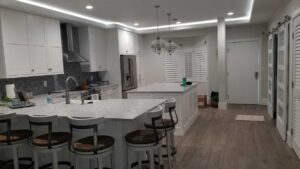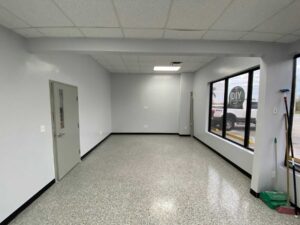There are plenty of reasons to consider home renovation. Some of these reasons include increasing a home’s property value, improving the home’s safety, making the home ecofriendly, and more. Of course, there’s also the question of whether a home even needs renovation, especially considering how big an investment that can be for homeowners.
In order to help homeowners in South Florida make informed decisions about their homes, and whether or not renovation is necessary, Taylor Builders is here to offer some tips. One good starting point is to consider the needs of both the current homeowner and a potential homebuyer. As such there are really three main questions to consider: are you planning to sell your home? Are there any structural problems that compromise safety? Is accessibility an issue?
Putting Your Home Up for Sale

The only time renovation can potentially decrease a home’s value is if the homeowner decides to make changes to the home in an attempt to make it more appealing to a potential homebuyer. One major reason for this is that homeowners cannot predict the individual needs of potential buyers who may have different priorities factor into their home purchasing decisions. Another way renovation can impact a home’s value is if it changes size of the home or livable space in any significant capacity. The more space a home occupies per square inch, the more likely the property will go up in price. Similarly, the less liveable space there is, the less likely a buyer will consider buying the home, especially if they have a family and there aren’t enough rooms.
Fixing Structural Issues with the Home

While renovation isn’t recommended for every single issue that can be fixed individually, if there is more than one structural problem to address, this often indicates a problem with the home’s foundation. In this case, home renovation would reduce the long-term costs of fixing each structural issue on an individual basis. To successfully renovate a home, however, there are still important things to take into consideration. This includes how much time the renovation will take, the homeowner’s budget, weather conditions, and whether or not the homeowner will need to temporarily stay in a hotel while renovations are taking place.
Improving Home Accessibility

Accessible bathrooms are another matter of concern for elderly and disabled homeowners. Sinks, for example, will need space for wheelchair users slide under in order to wash their hands. Toilets may also need to be moved to a different part of the bathroom that offers enough space for a wheelchair user to move and may need to be equipped with handlebars. Bathtubs may need to be replaced with shower stalls that enable easy walk-in or roll-in. Showers may also need to be equipped with grab-on bars and hand-held showerheads.
Related to accessible bathrooms is the need for accessible kitchens. Many of the same adjustments made to bathrooms also need to be made to kitchens to make them more accessible to elderly and disabled homeowners. For wheelchair users, they will still need kitchen sinks and stoves that are wheelchair friendly. They will also need cabinets and drawers that are easy to reach, and the kitchen space may also need to be made wider to facilitate easy mobility.
For more information on how Taylor Builders can renovate your home, please visit our services page or contact us.
